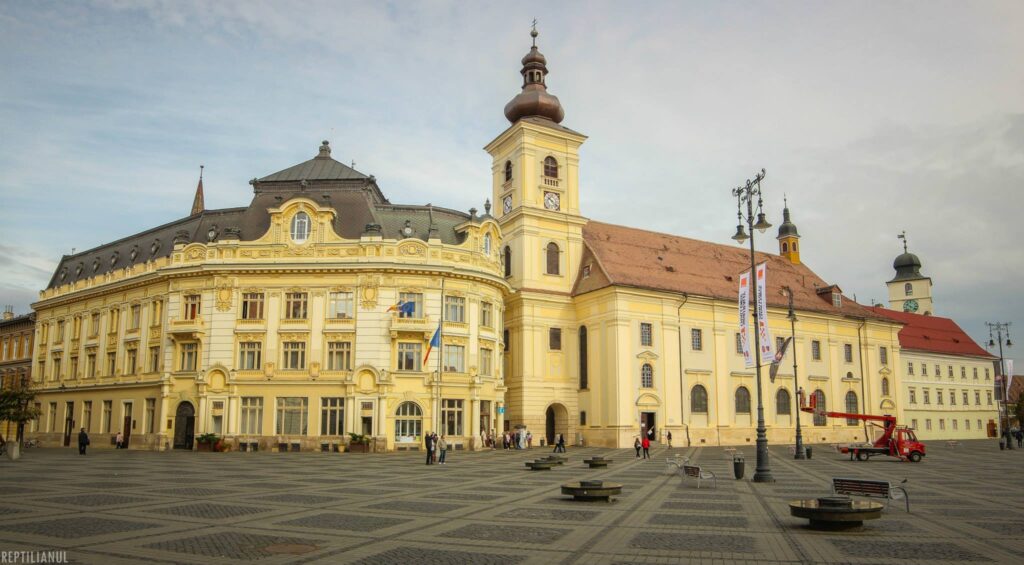The Large Square in Sibiu is the largest of the Sibiu squares, offering a broad perspective typical of the Renaissance and subsequent epochs. This is the historic center of the city, first mentioned in 1411 as a grain market. The Large Square has existed since 1366, with the completion of the city’s third fortification ring. Starting from the 16th century, it became the center of the citadel. Throughout its history, the square has had various names, from Der Grosse Ring or Grosser Platz before wars, to King Ferdinand Square between conflicts, and Republic Square during the communist period, reverting to its original name in 1990.
The northern side of the square was initially defined by the construction in 1466 of the Tailors’ Guild building and other civilian constructions, followed by the construction between 1726-1733 of the Jesuit church and its seminary, now a parish house. On the western side, the Brukenthal Palace was built on the site of two houses, becoming a prominent symbol of the city. In the early 20th century, the Credit Foncier Bank building was erected, contributing to the formation of the current Samuel von Brukenthal Street. The “eyes of the city,” the windows in the roofs of the buildings, are most prominently visible here.
The Large Square has a maximum length of 142 meters and a width of 93 meters, and all the buildings within it are declared historical monuments, reflecting the importance and richness of Sibiu’s cultural heritage.

